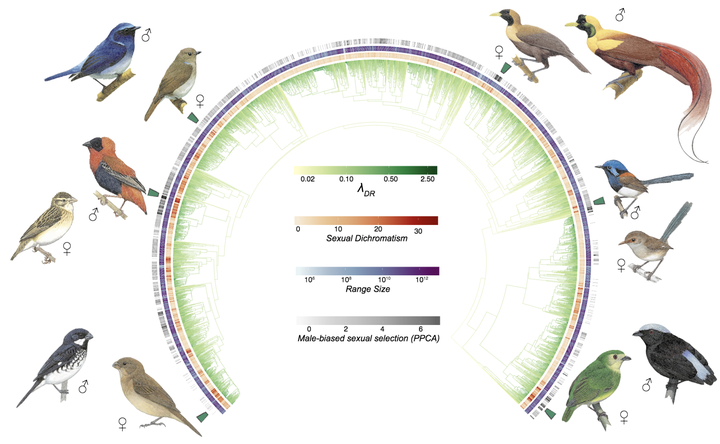Male‐biased sexual selection, but not sexual dichromatism, predicts speciation in birds
 Justin’s epic Figure 1.
Justin’s epic Figure 1.
Abstract
Sexual selection is thought to shape phylogenetic diversity by affecting speciation or extinction rates. However, the net effect of sexual selection on diversification is hard to predict because many of the hypothesized effects on speciation or extinction have opposing signs and uncertain magnitudes. Theoretical work also suggests that the net effect of sexual selection on diversification should depend strongly on ecological factors, though this prediction has seldom been tested. Here, we test whether variation in sexual selection can predict speciation and extinction rates across passerine birds (up to 5812 species, covering most genera) and whether this relationship is mediated by environmental factors. Male‐biased sexual selection, and specifically sexual size dimorphism, predicted two of the three measures of speciation rates that we examined. The link we observed between sexual selection and speciation was independent of environmental variability, though species with smaller ranges had higher speciation rates. There was no association between any proxies of sexual selection and extinction rate. Our findings support the view that male‐biased sexual selection, as measured by frequent predictors of male‐male competition, has shaped diversification in the largest radiation of birds.